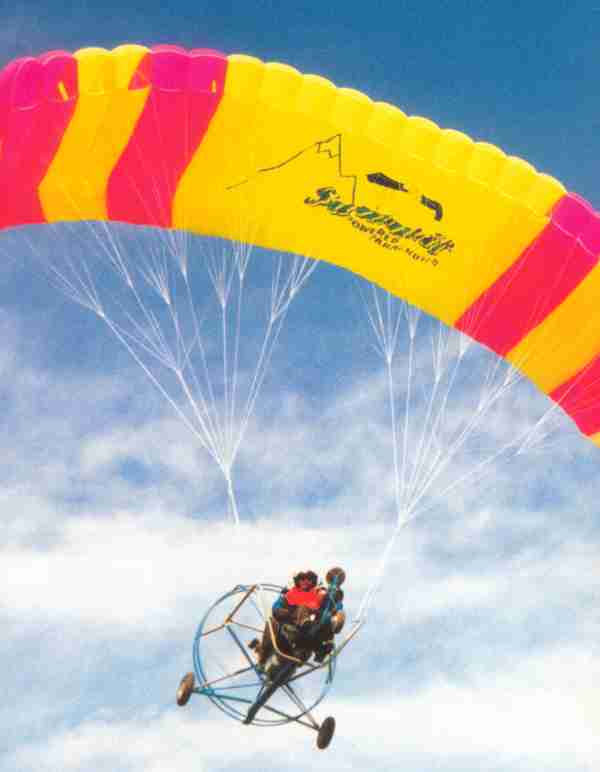
After saving two leading Canadian ultralight designs, refining, building, and marketing the Chinook and Beaver 550, plus operating their successful machine shop enterprise, they also started producing their own powered parachute, the Summit. And as they did with the other ultralights, they made changes to bring improvements they felt were needed.
ASAP changed the control system from the standard foot-tubes that create lateral control on most powered parachutes. Summit uses “foot platforms.” Accessible only to the front seat pilot, the platforms (like rudder pedals) effect a turn in the direction pushed. When you push on one platform it slides on a rail to input the control to the canopy trailing edge.
Steering on the ground also takes a new turn. Instead of a joystick-type control common to other brands, the Summit employs a control wheel that moves the nosewheel only. A lever on this yoke activates a nose drum brake.
Summit supports its parachute canopy from four points, not unlike the Para-Ski but quite differently than most powered parachutes which suspend from a couple common points. ASAP says their method will reduce the “seesaw” pitch effect found in some brands.
Built up over a central “keel” (also unlike other brands), ASAP mounts two discreet seats in an almost level position. Those who never enjoyed sitting tight against their passenger will like the separated seats. For $11,000 with a Rotax 503, it looks like a lot for the money.


I love the machine but the ground steering sucks.
The good news is that all powered parachutes generally leave the ground so quickly that ground steering is not a big aspect of piloting one.